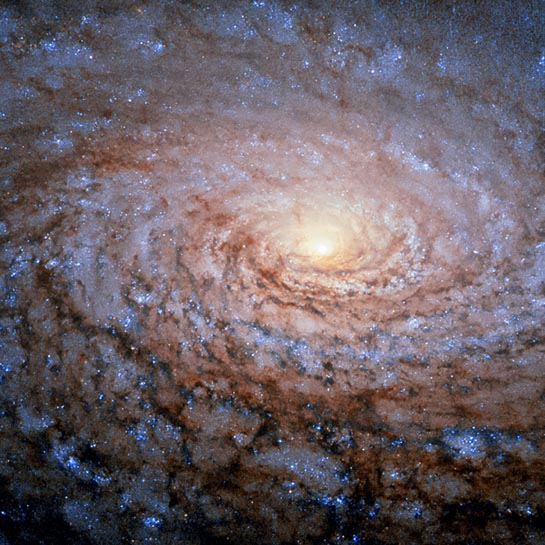
Spiral Galaxy
RA 13h 15m 50.09s Dec 42° 1' 39.01"
Canes Venatici
35 million light years
9.3
1.83 x 1.71 arcminutes
North is 11.6° right of vertical
ESA/Hubble & NASA
September 7, 2015
WideField View: G1101
ABOUT THIS IMAGE:
The arrangement of the spiral arms in the galaxy Messier 63, seen here in a new image from the NASA/ESA Hubble Space Telescope, recall the pattern at the center of a sunflower. So the nickname for this cosmic object - the Sunflower Galaxy - is no coincidence.
Discovered by Pierre Mechain in 1779, the galaxy later made it as the 63rd entry into fellow French astronomer Charles Messier's famous catalogue, published in 1781. The two astronomers spotted the Sunflower Galaxy's glow in the small, northern constellation Canes Venatici (the Hunting Dogs). We now know this galaxy is about 27 million light-years away and belongs to the M51 Group - a group of galaxies, named after its brightest member, Messier 51, another spiral-shaped galaxy dubbed the Whirlpool Galaxy.
Galactic
arms, sunflowers and whirlpools are only a few examples of nature's apparent
preference for spirals. For galaxies like Messier 63 the winding arms
shine bright because of the presence of recently formed, blue-white giant
stars, readily seen in this Hubble image.